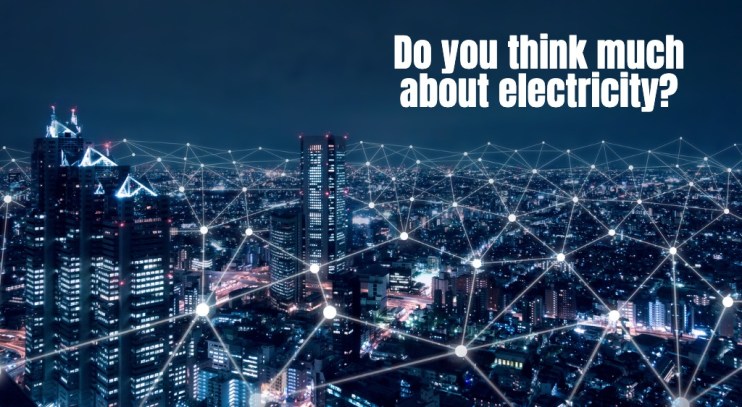When Blockchain becomes invisible

When you throw the switch on the wall (or ask your home automation system) to turn on the light – the light comes on. You don’t spend much time thinking about electricity, how it arrives at your home, the wires it flows through or the circuits that make everything work. You trust that it will be there and that it will work. Because what you wanted was to have enough light that you don’t stub your toe on the chair in the middle of the night.
The goal was to avoid the pain of stubbing your toe. The method was to add more light to the room. Everything else was the invisible infrastructure that you never even think about – but which you would miss if any part of it ceased to work.
Over the past 20 years mobile network operators have spent 000’s of millions of pounds marketing 3G – then 4G – and now gearing up for 5G. And it almost none of those campaigns did they ever figure out that no one cared what the technology was, they wanted to know what the benefits were going to be. How is 5G going to change my life? (And how much more are you going to charge me for the privilege?)
Today there is considerable focus on how blockchain plays a vital role in several projects. Sometimes this happens at the expense of the real value coming from the project. And sometimes this happens because there is no value in the project beyond that it serves as a novel use for blockchain.
“The best technology is completely invisible to the consumer.”
Whether it is 5G or blockchain, the best technology is entirely invisible to the consumer. When we can start talking about how people’s lives will be improved (and not even whisper the word “blockchain”) then we will be on the right track.
So what must be done to get to the “invisible blockchain”?
First, we need a shift to the idea that the end result will be blockchain as a public utility. It will be owned by no single entity or government and accessible to all.
The best new businesses, services and business models will come from using a reliable utility for sharing data—a utility which is available at cost-effective price and level of performance. The businesses today trying to build their own blockchain for a single purpose do not understand the core principles of collaboration, openness and transparency, which have led the blockchain movement to date.
Looking at today’s blockchain businesses, it is clear that they are still trying to be the intermediary who takes a fee from every transaction. Blockchain eliminates the need for intermediaries.
Others are trying to build closed systems with small numbers of participants – which can often be done more effectively with a database shared between a few enterprises.
In both cases, the problem is that people are trying to “bolt-on” blockchain to existing business models and traditional approaches to value creation and extraction.
Blockchain is fundamentally different. Value is added and extracted from all members of the blockchain network.
“Blockchain is fundamentally different. Value is added and extracted from all members of the blockchain network.”
There won’t be just a single blockchain. Neither will there be 1000’s of blockchains.
Not every business idea will require blockchain. Not every bit of data will be written onto a blockchain.
There will be blockchains which allow for globally recognised identity with control resting with the identity owner and not the identity provider. There will be blockchain’s which allow for the ability to track and trace products throughout the supply chain and to ensure efficient liquidity across all participants. And yes, there will be blockchains to provide globally accepted digital currencies.
Each of these blockchains will operate like a public utility, accessible to all. Equally, they will not be owned by the government, nor a monopoly of enterprises. The blockchains will be owned – and operated – by every member of the network. The more members in the network, the stronger the network in resilience, efficiency and fairness.
And in the end game, each of these blockchains will be mostly invisible to the consumer. The consumer will grab a banana and know that it was sourced fairly and equitably. Another consumer will choose to share part of their identity with a credit provider or a prospective employer. And someone else will send money across the street (or half-way around the world) and know that it will arrive safely, legally and efficiently.
And they will know blockchain is there in the background doing it’s thing – like electricity. But for the most part, blockchain will be invisible.

Twitter: @troy_norcross